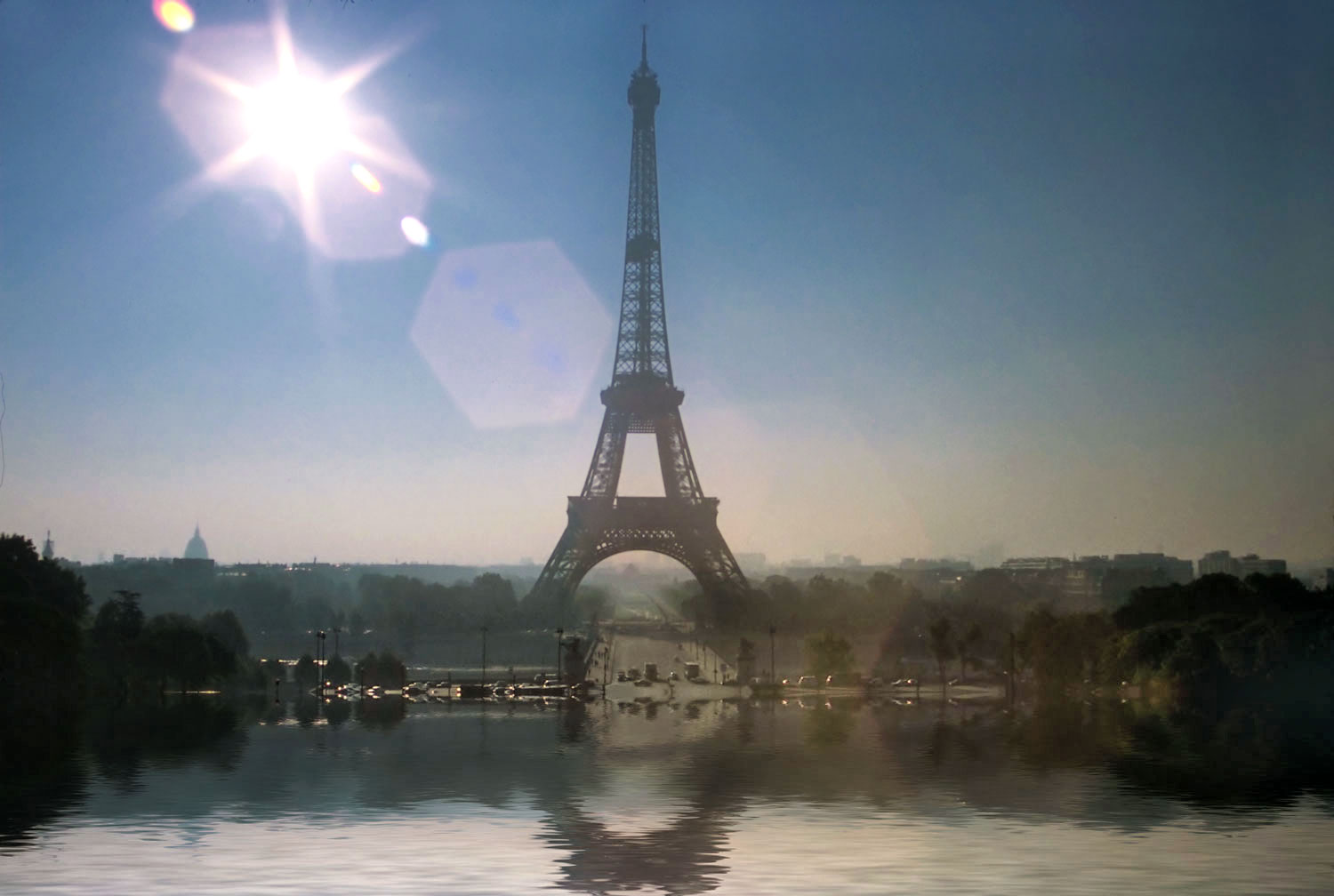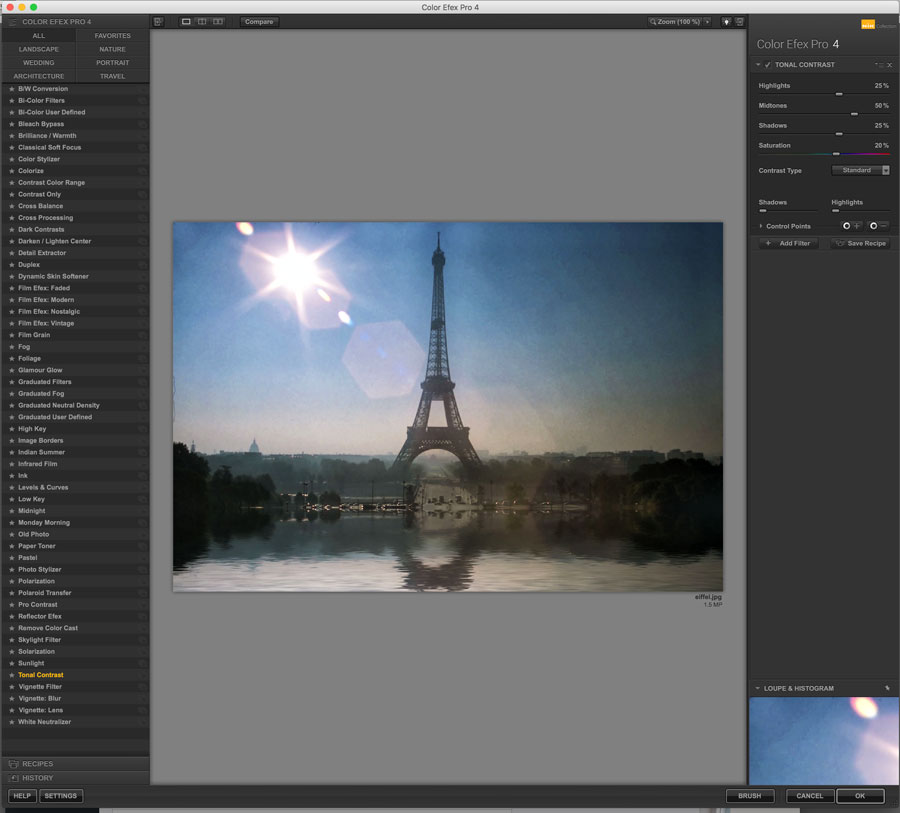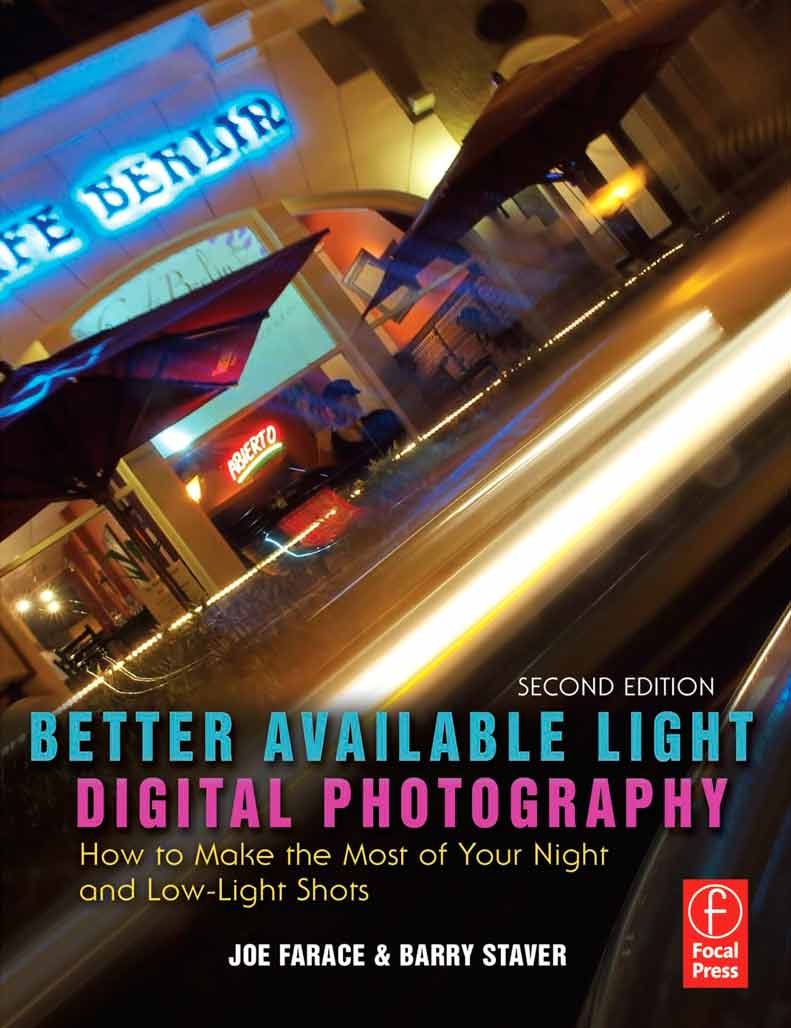Today’s Post by Joe Farace
“Once a year, go somewhere you have never been before.” Dalai Lama
Although Adobe defined the standard, you don’t need Photoshop tin order to use plug-ins. Compatible plug-ins can be used with other kinds of image editing programs but not all plug-ins work with Photoshop Elements and some plug-ins are not compatible with all image editing software.
When working with any plug-in it’s important to remember one of Farace’s Laws of digital imaging is that all effects are subject dependent. An effect that may look great for portraits may not work all that well with landscape images, so you may need more than one plug-in. The below image was made using one of my favorite image effects plug-ins—Flood by Flaming Pear Software. The original image of the Eiffel Tower in Paris (not Las Vegas) was shot on film during a time when I, for some unknown reason, was in love with the idea of create use of flare. Maybe it was before my J.J. Abrams period before I knew who he was… Camera used was a Nikon FM2 with Vivitar 24-48mm f/ 3.8 Series 1 lens. Film was Kodak Ektachrome; exposure was unrecorded.

 Some companies have extended their technology to work with Adobe Lightroom but that program’s plug-in architecture is vastly dissimilar to Photoshop’s. Adobe themselves differentiates between plug-ins and external editors and Lightroom has the ability to define as many external editors as well as presets that are compatible with it. According to Adobe “image processing plug-ins are best utilized through Photoshop”
Some companies have extended their technology to work with Adobe Lightroom but that program’s plug-in architecture is vastly dissimilar to Photoshop’s. Adobe themselves differentiates between plug-ins and external editors and Lightroom has the ability to define as many external editors as well as presets that are compatible with it. According to Adobe “image processing plug-ins are best utilized through Photoshop”
According to Journey Era, “A Lightroom preset is a configuration of settings, designed to achieve a certain look or style of your photo. You install the presets into your Lightroom and then when you click on a particular preset while in the develop module, the pre-determined (pre-set) settings will apply to that photo.”
Plug-in, like the Tonal Contrast filter that’s part of Color Efex package of plug-ins, allows control over the contrast (only) of highlights, midtones or shadows without affecting the rest of the image. I used that plug-in after applying the Flood plug-in to my original image to proeuce the finished photograph you see here. You can use this filter for highly targeted control of a particular segment of an image’s tonal range.
Along with photographer Barry Staver, Joe is co-author of Better Available Light Digital Photograph with new copies available from Amazon for $21.50 with used copies starting at five bucks. For some reason,(not Barry or I) the Kindle price is really high.
